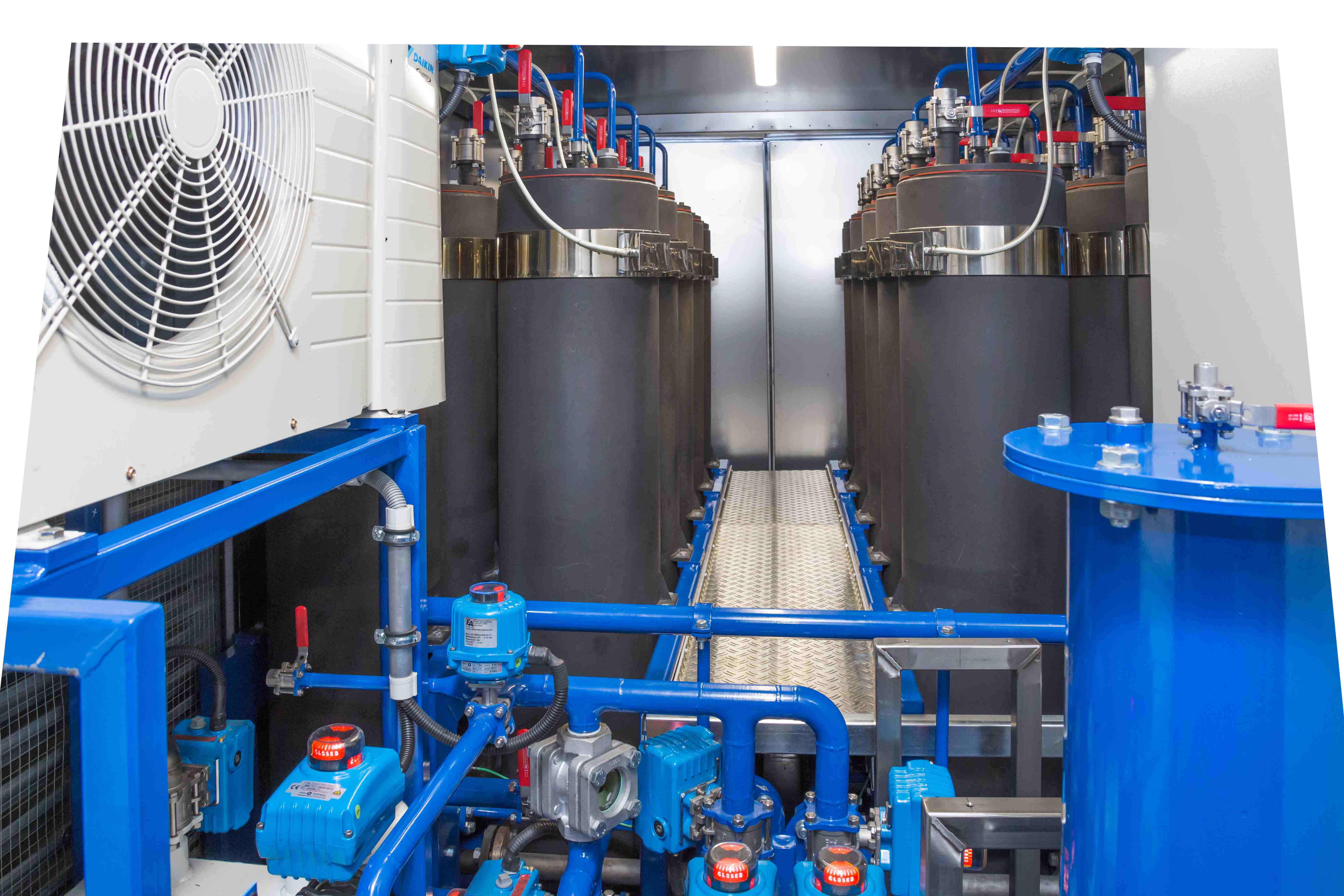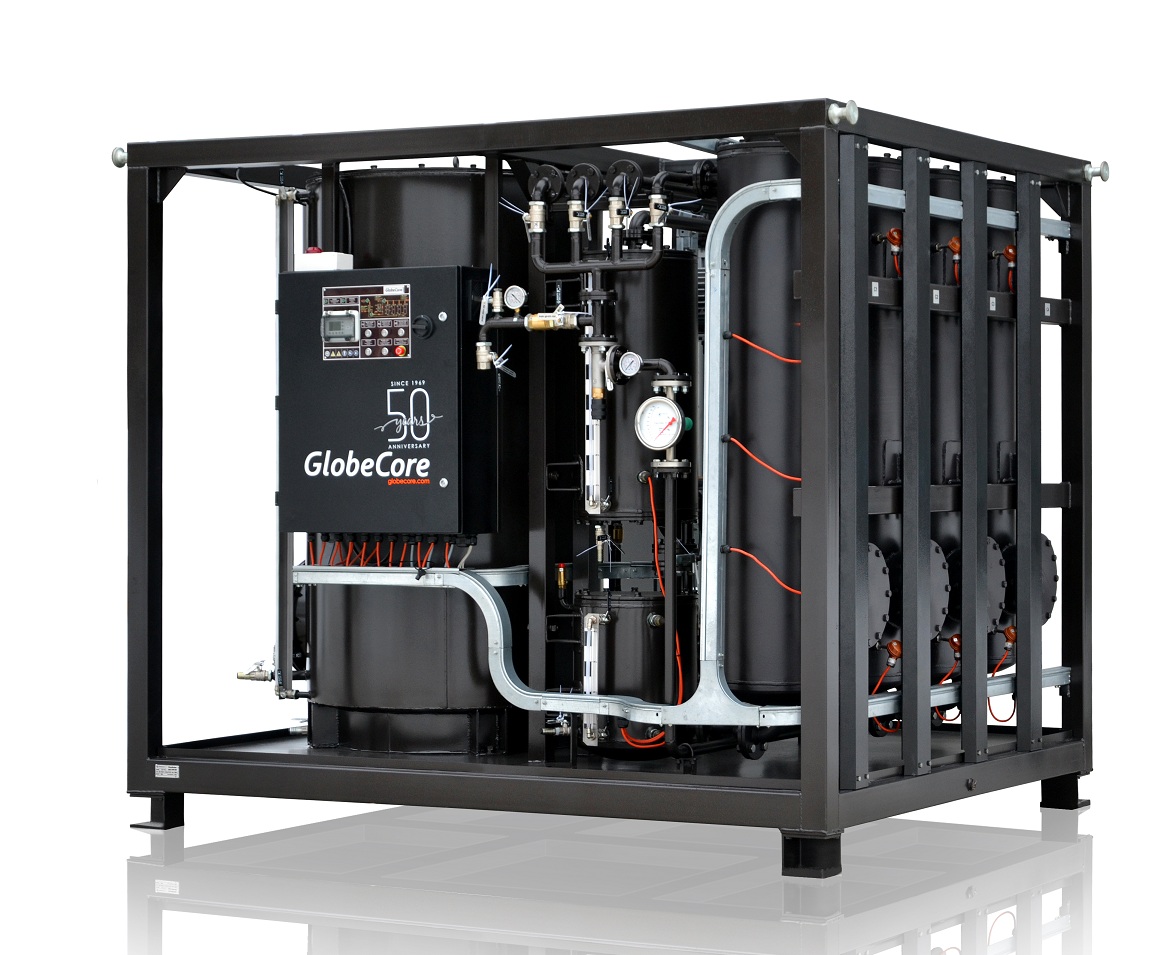How Transformer Oil Regeneration Plants Enhance Sustainability
How Transformer Oil Regeneration Plants Enhance Sustainability
Blog Article
Just How Regenerated Transformer Oil Extends Transformer Life-span
The role of transformer oil is essential in making sure the integrity and durability of transformers, acting as both an insulator and coolant. Regenerated transformer oil uses a compelling option to boost these functions by properly removing dangerous impurities that jeopardize performance. Through a precise regrowth procedure, the oil's dielectric properties and thermal stability can be recovered, bring about significant enhancements in functional performance. Understanding the ins and outs of this process and its wider implications for transformer upkeep discloses a path to not just expand lifespan but also maximize prices in energy monitoring systems.
Importance of Transformer Oil
Transformer oil plays an important function in the effective operation of electrical transformers. It largely functions as a protecting medium, guaranteeing and stopping electrical discharges that components run securely under high voltage conditions. The oil's dielectric buildings are basic to keeping the stability of the transformer, as they lessen the danger of failures that can cause catastrophic cases or expensive downtimes.
Along with its shielding abilities, transformer oil also functions as a coolant. As transformers run, they produce warmth that needs to be dissipated to avoid overheating and succeeding damage. The oil flows within the transformer, taking in and transferring heat far from vital components, thus keeping optimum operating temperature levels.
In addition, transformer oil functions as a barrier versus wetness and contaminants, which can endanger the performance and long life of the transformer. Its chemical residential properties assist in counteracting acids and other results that may create in time, adding to the overall wellness of the electrical system.
Advantages of Regenerated Oil

Furthermore, regenerated transformer oil has a lower level of contaminations, consisting of particles and pollutants that can degrade performance. This purity not only improves the oil's thermal conductivity yet also extends the operational life expectancy of transformers by minimizing overheating risks. The enhanced thermal stability of regrowed oil makes certain consistent performance even under high operating temperatures, which is crucial for keeping transformer performance.
An additional benefit is its ecological influence. Restored oil advertises sustainability by reducing waste and the need for new oil production, thus reducing the carbon footprint related to transformer maintenance. Transformer Oil Regeneration. The longevity of regenerated oil translates to reduced upkeep expenses over time, as fewer oil changes and less constant tools downtime are required.
Process of Oil Regrowth
The regrowth of transformer oil includes a methodical process made to bring back the oil's original homes and enhance its performance. This procedure normally begins with the removal of the utilized oil from the transformer, which is then subjected to different filtration methods.
The primary step in the regrowth procedure is the filtration, where solid pollutants such as dust, steel, and sludge bits are eliminated. This is often adhered to by vacuum purification, which assists to get rid of wetness and volatile compounds, consequently improving the oil's dielectric toughness.

Impact on Transformer Efficiency
Restoring the residential properties of regenerated transformer oil considerably affects the overall performance of transformers. Improved dielectric strength is among one of the most vital advantages, as it permits much better insulation and lowers the possibility of electric failure. This improvement leads to an extra stable procedure under high voltage conditions, eventually bring about increased effectiveness.
Furthermore, the elimination of impurities and deterioration items throughout the regrowth procedure minimizes the risk of getting too hot. Cleanser Full Report oil assists in far better warmth dissipation, which is important for preserving ideal operating temperatures. Therefore, the thermal efficiency of the transformer is site web boosted, enabling higher loads without compromising reliability.
Furthermore, the chemical security of restored oil ensures extended operational life. It resists oxidation and deterioration, decreasing the frequency of maintenance treatments and oil substitute. This security not only contributes to improved performance yet also aligns with sustainability objectives by decreasing waste.
Future of Transformer Upkeep
As innovations in modern technology remain to improve the landscape of electric design, the future of transformer maintenance is poised for significant transformation. The assimilation of clever technologies, such as IoT sensors and anticipating analytics, makes it possible for real-time surveillance of transformer health and wellness, enhancing the ability to preemptively resolve concerns before they escalate right into significant failures. This proactive strategy not just maximizes functional effectiveness but also extends the life-span of transformers.
Additionally, the application of synthetic intelligence (AI) in information analysis enables for more exact fault discovery and medical diagnosis. By leveraging artificial intelligence formulas, upkeep groups can identify patterns in functional data that human experts may ignore, resulting in even more educated decision-making.
Furthermore, the fostering of environment-friendly practices, including using regenerated transformer oil, is readied to redefine maintenance procedures. This lasting approach not only lessens ecological impact however likewise boosts the overall health of the transformer.
Last but not least, the shift towards automation in upkeep procedures is anticipated to streamline operations, decrease downtime, and reduced prices. As these innovations continue to develop, the future of transformer upkeep will undoubtedly become extra reliable, reputable, and lasting, making sure the honesty of crucial electric framework.
Verdict
The usage of regenerated transformer oil dramatically boosts the functional longevity of transformers. By efficiently recovering dielectric toughness and thermal security, this oil plays a vital function in mitigating dangers connected with overheating and oxidation. go to my blog The regeneration procedure not just eliminates dangerous pollutants however likewise decreases maintenance frequency and oil replacement costs. Ultimately, the adoption of restored oil stands for an essential innovation in transformer upkeep, making sure ideal performance and sustainability in the monitoring of electric facilities.
The role of transformer oil is critical in making certain the dependability and longevity of transformers, offering as both an insulator and coolant.Transformer oil plays a vital role in the reliable operation of electrical transformers. Restored oil promotes sustainability by lowering waste and the requirement for brand-new oil production, thereby lowering the carbon footprint linked with transformer maintenance.Recovering the properties of regenerated transformer oil substantially influences the general performance of transformers.The application of regenerated transformer oil considerably improves the operational durability of transformers.
Report this page